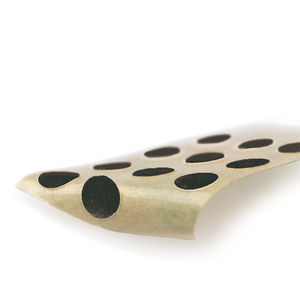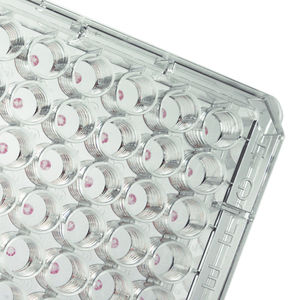
- Laboratory
- Sample management
- Laboratory flask
- PreSens Precision Sensing GmbH
Laboratory vial SensorVial SV-PSt5glass
Add to favorites
Compare this product
fo_shop_gate_exact_title
Characteristics
- Applications
- laboratory
- Material
- glass
Description
These 4 mL glass vials have an optically isolated oxygen sensor type PSt5 integrated at the bottom. This sensor is read out with the SDR SensorDish® Reader. The SensorVials fit into a 24-well plate, which is placed on the reader for easy positioning. Due to the optical isolation, the sensor can be used at ambient light. SensorVials are ideally suited for respiration monitoring of small aquatic organisms. In combination with the Mask for SensorVials SDR-MSV24 they can also be applied for photosynthesis experiments (up to 50 % O2). The mask shields the reader optics from artificial light so precise optical oxygen measurements can be recorded. The vials can be cleaned with ethanol and are re-usable.
Contactless online oxygen monitoring
Parallel measurements
Re-usable
Respiration monitoring
APPLICATIONS
Real-time Monitoring of the Respiration of Marine Zooplankton
Oxygen consumption of 3 - 4 copepod nauplii per sample was monitored in air-tight glass vials for 6 h. The nauplii were offered phytoplankton at environmental concentrations. Feeding and faecal pellet production rates were estimated simultaneously. The respiration rates were linear and steady, thus revealing that the nauplii were neither influenced by the vessel walls nor by diminishing of food. The respiration rate was compared to literature values of other species.The higher oxygen consumption of the nauplii was presumably due to constant feeding.
Properties -
Compatibility - Aqueous solutions, ethanol (max. 10 % v/v), methanol (max. 10 % v/v), pH 2 - 10
Calibration - Pre-calibrated
Maximum filling volume - 5 mL
Catalogs
Biology & Environmental Research
20 Pages
Optical Sensor Systems
20 Pages
Other PreSens Precision Sensing GmbH products
O2 SENSORS
*Prices are pre-tax. They exclude delivery charges and customs duties and do not include additional charges for installation or activation options. Prices are indicative only and may vary by country, with changes to the cost of raw materials and exchange rates.















